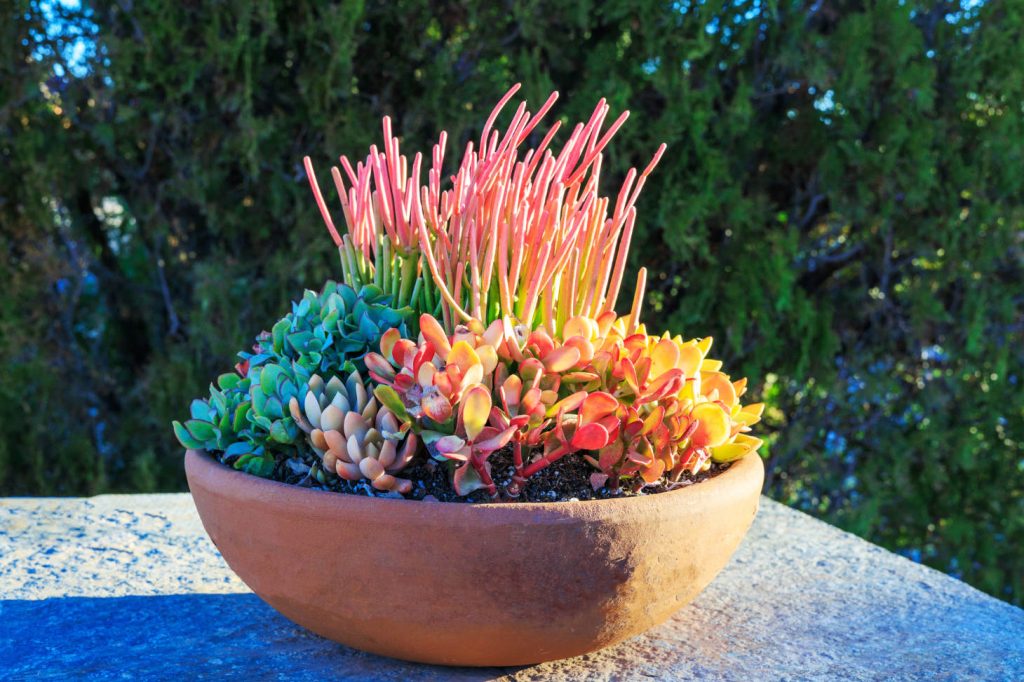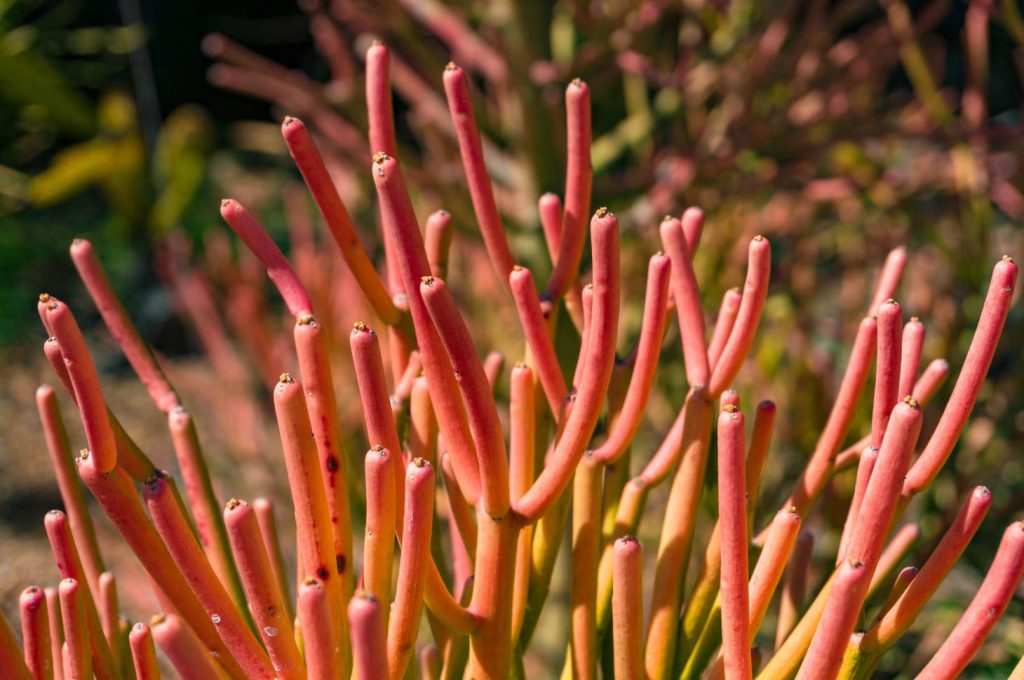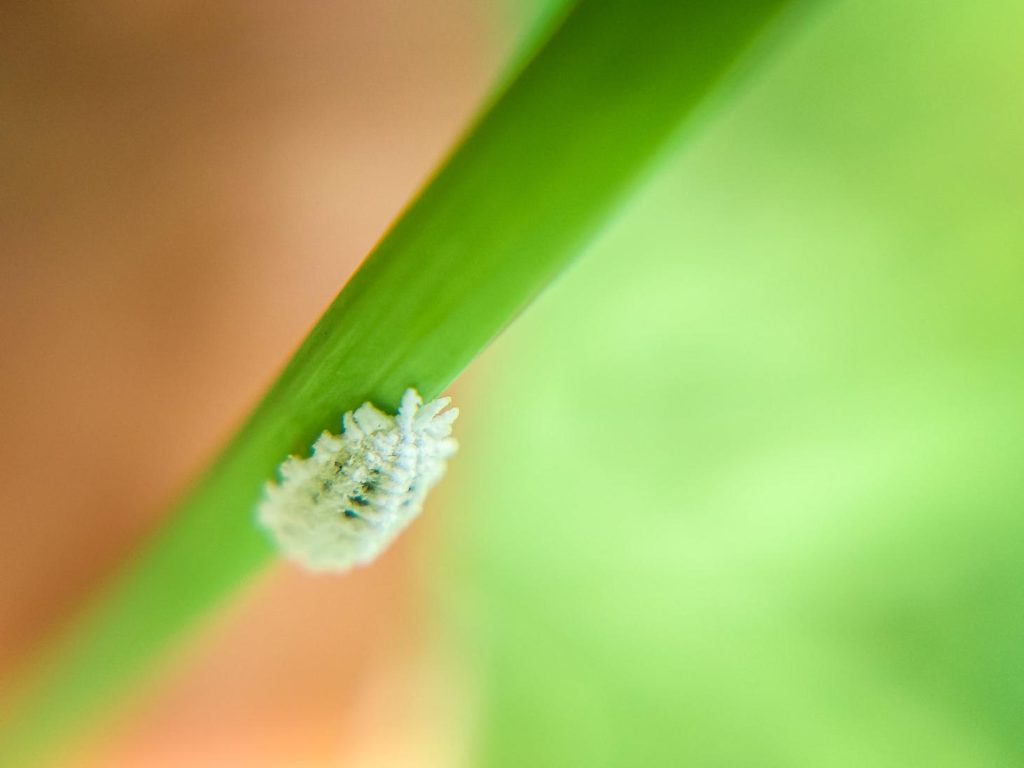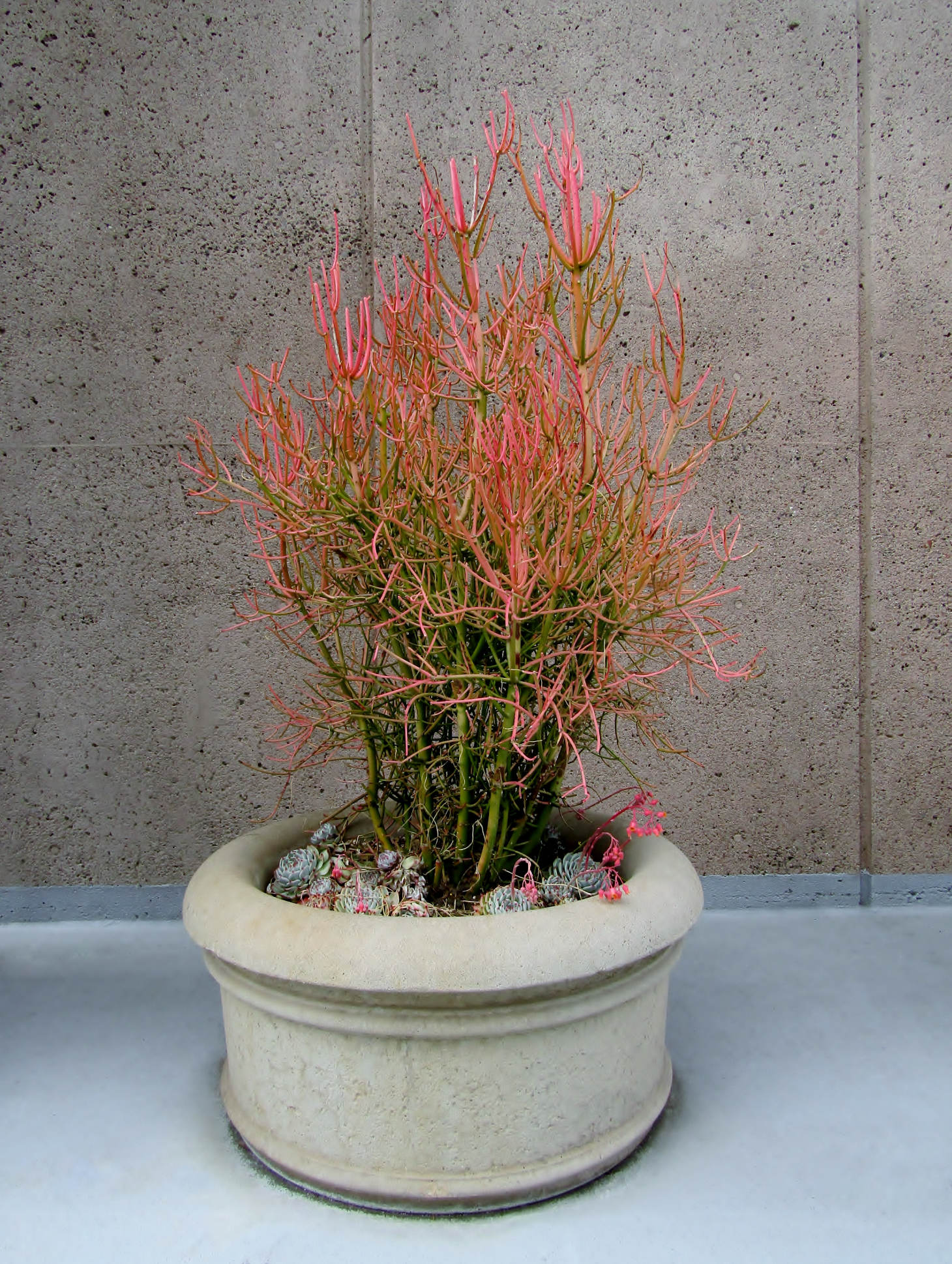Pencil Cactus Care
The Pencil Cactus (Euphorbia tirucalli) is a fascinating succulent that adds a unique architectural element to any indoor space. Also known as “Sticks on Fire” or “Indian Tree Spurge,” this plant features pencil-thin, branching stems that create an eye-catching display. Despite its name, it’s not actually a cactus but rather a succulent from the Euphorbia family.
Pencil Cacti thrive in bright, direct sunlight for at least six hours daily and prefer to dry out completely between waterings. These drought-tolerant plants are perfect for busy plant parents or those who tend to forget watering schedules. Your Pencil Cactus will not tolerate low light conditions, so placing it near a sunny window is essential for its growth and distinctive appearance.
This plant has toxic properties so be sure to read to the end to find out more about handling this plant safely.

When caring for your Pencil Cactus, remember that less is more. Water every two to three weeks during the growing season (spring and summer) and once a month or less during the fall and winter. Allow the soil to dry out completely between waterings. These succulents prefer warm temperatures and low humidity, making them ideal houseplants for most indoor environments.
Key Takeaways
- Pencil Cacti need bright, direct sunlight and infrequent watering to thrive as houseplants.
- This Euphorbia species contains toxic sap, so always wear gloves when handling or pruning.
- With proper drainage, minimal watering, and plenty of sunlight, your Pencil Cactus can grow for years with little maintenance.
Optimal Growing Conditions
Pencil cactus thrives when provided with the right environment that mimics its native habitat. Creating these ideal conditions will help your Euphorbia tirucalli grow tall and maintain its unique appearance.
Lighting Requirements of Euphorbia Tirucalli
Pencil cactus needs bright light to thrive. Place your plant in a spot that receives at least six hours of direct sunlight daily. Morning sunlight works best as it’s less intense than afternoon rays. South or west-facing windows are ideal locations for indoor plants.
If you notice your pencil cactus becoming leggy or pale, it’s likely not getting enough light. Consider moving it to a brighter location or supplementing with a grow light. These plants can adapt to medium light conditions but will grow more slowly and produce fewer branches.
During summer months, you can move your plant outdoors where it can receive more direct light. Just be sure to gradually acclimate it to prevent sunburn on the stems.
Temperature and Hardiness Zones
Pencil cactus prefers temperatures between 65°F and 70°F, making it well-suited for average home environments. This succulent can tolerate warmer temperatures but may struggle when exposed to cold.
In terms of hardiness zones, Euphorbia tirucalli thrives outdoors year-round in USDA zones 10-11. If you live in a colder climate, it’s best to grow your pencil cactus as a houseplant or move it indoors during winter months.
Temperature consistency matters for this plant. Avoid placing it near drafty windows, air conditioning vents, or heaters where it would experience sudden temperature changes. Cold drafts below 50°F can damage the plant significantly.
Soil Composition
Well-draining soil is crucial for pencil cactus health. Create a suitable mix by combining regular potting soil with perlite and coarse sand at a ratio of 2:1:1. This ensures excess water drains quickly to prevent root rot.
For container growing, choose pots with drainage holes. Terra cotta pots work especially well as they allow soil to dry more efficiently between waterings.
You can also use commercial cactus or succulent soil as a base, then add extra perlite to improve drainage further. The ideal pH for pencil cactus soil is slightly acidic to neutral (6.0-7.0).
Never use heavy garden soil or moisture-retaining potting mixes, as these hold too much water and can quickly lead to root problems. It is essential to use a high-quality, high-drainage soil mix.

Plant Care Essentials
Pencil cactus thrives with minimal care when you understand its basic needs. Your Euphorbia tirucalli requires specific attention to watering, nutrition, and seasonal adjustments to maintain its unique structure and healthy growth.
Watering Practices for Pencil Cactus
Allow your pencil cactus soil to dry completely between waterings. During spring and summer, water every 2-3 weeks, depending on your home’s temperature and humidity. In winter, reduce watering to once a month or less.
Overwatering causes root rot, the most common killer of pencil cacti. When in doubt, it’s better to underwater than overwater this drought-tolerant plant.
Check soil moisture by inserting your finger about 2 inches deep. If it feels dry, it’s time to water. Use room temperature water and ensure your pot has drainage holes to prevent water accumulation.
Signs of underwatering include shriveled stems, while overwatering causes soft, yellowing branches that may drop.
Feeding and Fertilizing Euphorbia Tirucalli

Pencil cactus requires minimal fertilization to thrive. Apply a diluted cactus fertilizer (half-strength) once every 4-6 weeks during spring and summer growing seasons.
Avoid fertilizing in fall and winter when the plant’s growth naturally slows. Using a fertilizer high in phosphorus helps promote blooming.
Fertilizer Types:
- Cactus-specific liquid fertilizer (diluted to half strength)
- Slow-release granular succulent fertilizer
- Organic options like diluted worm tea
Over-fertilizing can damage your plant’s root system. If you notice salt buildup (white crust) on the soil surface, flush the soil thoroughly with water.
Seasonal Care Tips
Pencil cactus thrives in full sun during summer. It can handle some direct morning sun but protect it from harsh afternoon rays that may scorch the stems.
During winter, move your plant to the brightest location available. Reduce watering significantly and maintain temperatures above 50°F (10°C) to overwinter successfully.
If you live in zones 10-11, your pencil cactus can live outdoors year-round. In colder regions, bring it inside before temperatures drop below 50°F.
Prune in early spring to maintain shape and size. Always wear gloves as the milky sap is toxic and can cause skin irritation. Clean your cutting tools with alcohol after pruning to prevent sap transfer to other plants.
Pruning and Propagation of Fire Stick Cactus
Fire Stick Cactus (Euphorbia tirucalli) requires occasional pruning for shape and can be easily propagated from cuttings. Both processes need careful handling due to the plant’s irritating sap.
Safe Pruning Techniques
When pruning your Fire Stick Cactus, always wear protective gear first. Put on long sleeves, gloves, and goggles to protect your skin and eyes from the toxic sap that can cause irritation.
The best time to prune is during the dry season, after winter and spring rains have passed. During rainy seasons, the plant becomes filled with sap that may squirt when branches are cut.
Clean your pruning shears with rubbing alcohol or a bleach solution before and after use. This prevents disease spread and contamination.
Make clean cuts just above existing branches. Remove broken, damaged, or overgrown branches to maintain the plant’s shape. Step back occasionally to check your progress and ensure balanced pruning.
If sap contacts your skin, wash immediately with soap and water.
Propagation from Cuttings
Every branch you remove while pruning can become a new plant. Select healthy stems that are at least 4-6 inches long for propagation.
After cutting, allow the cuttings to dry for 4-6 days. This crucial step forms a callus over the cut end, preventing rot when planted.
Prepare a pot with well-draining cactus soil. Once the cutting has callused, simply place it into the soil. While it is possible to propagate Fire Stick Cactus without rooting hormone, using it can enhance root development and increase the chances of success.
Water sparingly until roots develop. Place in bright, indirect light during this period. Avoid direct sunlight until the cutting establishes roots, which typically takes 2-3 weeks.
The best time for propagation is late spring or early summer when the plant is actively growing.
Health and Safety Measures

While the pencil cactus is a striking addition to your home, it requires careful handling due to its toxic properties. Proper safety measures and pest management will ensure both your plant thrives and your household remains safe.
Understanding Toxicity
The pencil cactus (Euphorbia tirucalli) contains a milky white sap that is highly toxic. This sap can cause significant skin irritation, rashes, and redness upon contact. If the sap gets into your eyes, it may cause temporary blindness or severe eye irritation.
Always wear protective gloves when pruning or handling your pencil cactus. Keep the plant away from children and pets who might chew or break the stems.
If you have allergies or sensitive skin, consider placing your pencil cactus where it won’t be frequently touched.
Remember that all parts of the plant contain this irritating sap, and broken stems will release it immediately.
Disease and Pest Prevention

Pencil cacti are relatively resistant to pests, but they can still face issues. Common pests include mealybugs, scale insects, and spider mites. Check your plant regularly for white cottony substances, tiny crawling insects, or fine webbing.
To prevent pest infestations:
- Inspect new plants thoroughly before bringing them home
- Isolate affected plants immediately
- Wipe leaves gently with alcohol-soaked cotton balls for minor infestations
- Use insecticidal soap for more serious problems
Root rot is the most common disease, typically caused by overwatering. Ensure your pot has drainage holes and the soil dries completely between waterings.
Fungal issues can develop in humid conditions. Improve air circulation around your plant and avoid getting the stems wet when watering.
First Aid Tips
If you come into contact with pencil cactus sap, act quickly:
- Skin contact
- Immediately flush the exposed skin thoroughly with a large amount of water.
- Gently cleanse the affected area using a mild soap and water solution to eliminate any residual substance.
- Apply a cool compress to help reduce any inflammation.
- If irritation continues or intensifies, consult a medical professional.
- Eye contact
- Immediately irrigate the affected eye(s) with a continuous stream of water for several minutes.
- Avoid touching or rubbing the eyes, as this may worsen the irritation or spread the substance.
- It is important to seek medical evaluation without delay to avoid potential complications.
Ingestion
- Rinse the mouth out with water. Follow this by drinking a soothing liquid such as milk to help dilute the ingested material.
- Do not attempt to induce vomiting.
- If pain or discomfort persists, it is advisable to contact a doctor or other healthcare professional.
Keep a plant identification card near your pencil cactus with these first aid instructions for quick reference. Never ignore symptoms, as reactions can worsen over time.

